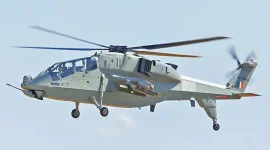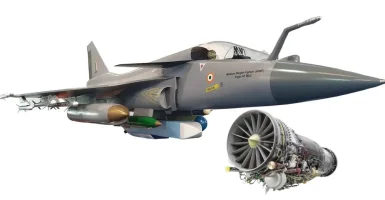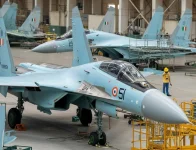- Views: 1K
- Replies: 4

Hindustan Aeronautics Limited (HAL) is making significant strides in enhancing the capabilities of India's Light Combat Helicopter (LCH) Prachand by exploring the integration of a miniaturized Active Electronically Scanned Array (AESA) radar.
This development aims to bolster the helicopter's combat prowess by providing superior situational awareness, especially in complex battlefield environments.
The Mini-AESA radar, currently under development by HAL, is designed to provide crucial aerial mapping, ensuring that the LCH crew has real-time data on the surrounding environment.
With its ability to detect and track targets in diverse conditions, the Mini-AESA radar would enable the LCH Prachand to navigate and engage with greater precision in combat zones, even when visibility is limited.
This enhanced capability is particularly relevant given the Indian Army's interest in using the LCH for counter-drone operations. The radar's long-range surveillance capabilities would allow the helicopter to effectively detect and neutralize enemy drones, which have become a significant threat in modern warfare.
Moreover, the radar's precision targeting would make the LCH ideal for engaging loitering munitions, offering a unique countermeasure to these emerging threats.
Beyond its primary combat roles, the Mini-AESA radar would also enhance the LCH's ability to perform reconnaissance, surveillance, and strike operations in complex and contested environments.
The development of this Mini-AESA radar extends beyond the LCH. HAL is also considering its use on Loyal Wingman aircraft and Autonomous Strike Unmanned Combat Aerial Vehicles (UCAVs). Its compact size and advanced features make it a perfect fit for these platforms, which require enhanced situational awareness and precision in autonomous operations.
By equipping these platforms with AESA radars, HAL aims to boost the effectiveness of India's unmanned fleet, allowing for more sophisticated and coordinated strikes in joint operations with piloted aircraft.
While the integration of the Mini-AESA radar on the LCH Prachand is still under consideration, it represents a significant step towards enhancing India's combat capabilities.
If approved by both the Indian Army and Indian Air Force, the radar system will undergo rigorous Proof of Concept (PoC) trials to ensure it meets the LCH's operational requirements.
Successfully integrating the Mini-AESA radar into the LCH would provide India's helicopters with a significant edge in both conventional and asymmetrical warfare. It would also support the Army's vision for a future-ready combat platform, capable of adapting to new technologies and evolving battlefield challenges.



